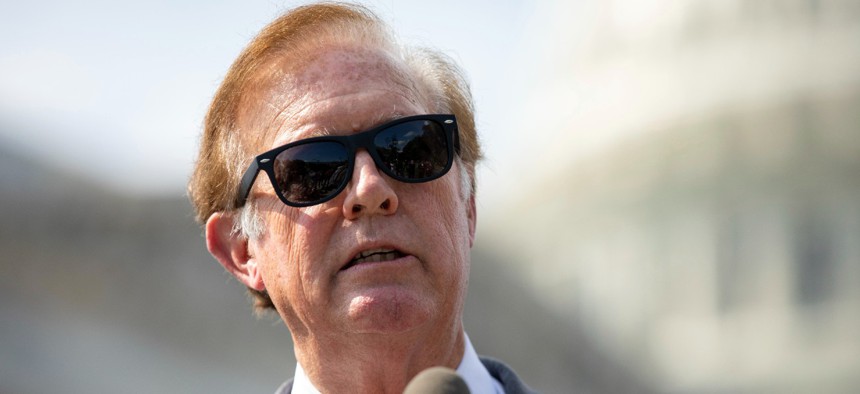
Rep. Randy Weber, R-Texas, introduced a bill to increase locality pay for Bureau of Prisons employees. Amanda Andrade-Rhoades / AP
A Bill to Resolve Prison Workers' Locality Pay Woes, and More
A weekly roundup of pay and benefits news.
A bipartisan bill introduced last week would seek to assuage some of the U.S. Bureau of Prisons' recruitment and retention issues by increasing the amount of locality pay bureau employees receive.
Rep. Randy Weber, R-Texas, introduced the Pay Our Correctional Officers Fairly Act (H.R. 5761) along with eight other Republicans and Rep. Matt Cartwright, D-Pa. The legislation would treat prisons that are located in a “Rest of U.S.” locality pay area as if they were actually located in the nearest locality pay area approved by the president’s pay agent.
The federal prison system has struggled with staffing issues for years, leading to mandatory overtime and some employees being assigned duties outside of their job descriptions. Each year, multiple prison representatives petition the Federal Salary Council, an advisory board of personnel experts and federal employee group leaders that submits annual recommendations on locality pay issues to the White House, to be granted a new locality pay area despite failing to meet the council’s standards for adding new pay areas. The petitions are usually unsuccessful.
“For too long, BOP employees working in designated ‘Rest of U.S.’ jurisdictions located near metropolitan areas have been subjected to lower pay rates even though they have higher costs of living for working near major cities,” Weber said. “As members of the BOP Reform Caucus, we are championing solutions to address problems that have plagued the BOP and our correctional officers, and our bipartisan bill is a step in the right direction.”
The bill provides an exception for prisons that are “not located within 100 miles of any pay locality other than ‘Rest of U.S.’ ” It would take effect for the first pay period beginning at least 180 days after the bill is enacted.
Open Season Is Around the Corner
The annual period when federal employees can enroll in or switch employer-subsidized health insurance plans is set to start next week.
The Federal Employees Health Benefits Program open season runs from Nov. 8 until Dec. 13 this year. According to the Office of Personnel Management, federal employees and retirees will spend an average of 3.8% more on their health insurance premiums in 2021, while the government’s share will increase by an average of 1.9%.
On average, non-postal federal workers enrolled in “self-only” plans will pay $3.17 more per bi-weekly pay period, while feds in “self plus one” insurance plans will pay $7.61 more per pay period. Federal employees who are enrolled in family coverage will pay an average of $10.09 more per pay period next year.
For the Federal Employees Dental and Vision Insurance program, OPM said that next year the average premium increase for dental plans will be 0.81%, while vision plan premiums will increase by an average of 0.95%.
Additionally, federal workers who are enrolled in a flexible spending account program, in which an employee sets aside money on a pre-tax basis to use on medical expenses like prescriptions and copays, must re-enroll each year. This has added significance during this year’s open season, as due to the COVID-19 pandemic, unused FSA money will roll over into participants' 2022 accounts.
NEXT STORY: TSP Funds Bounce Back After Rough September







